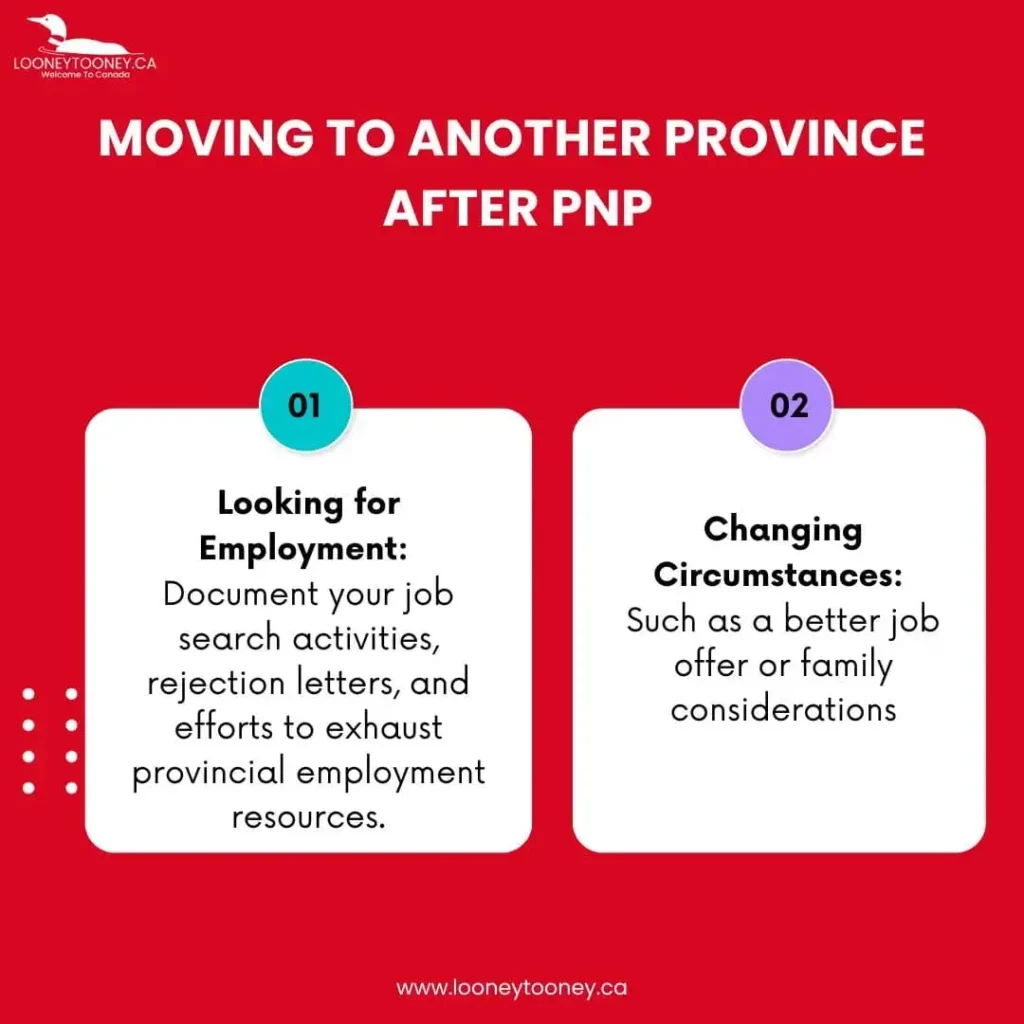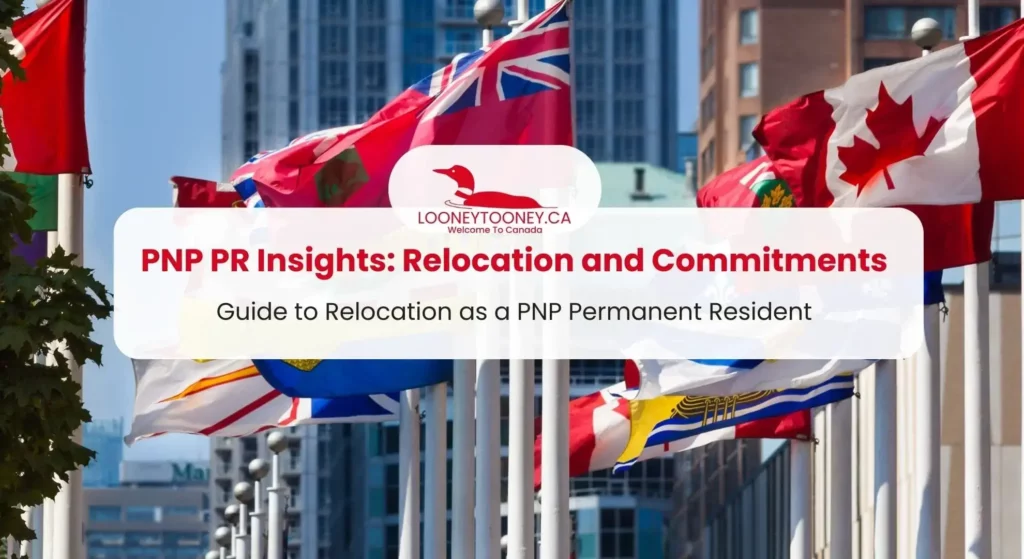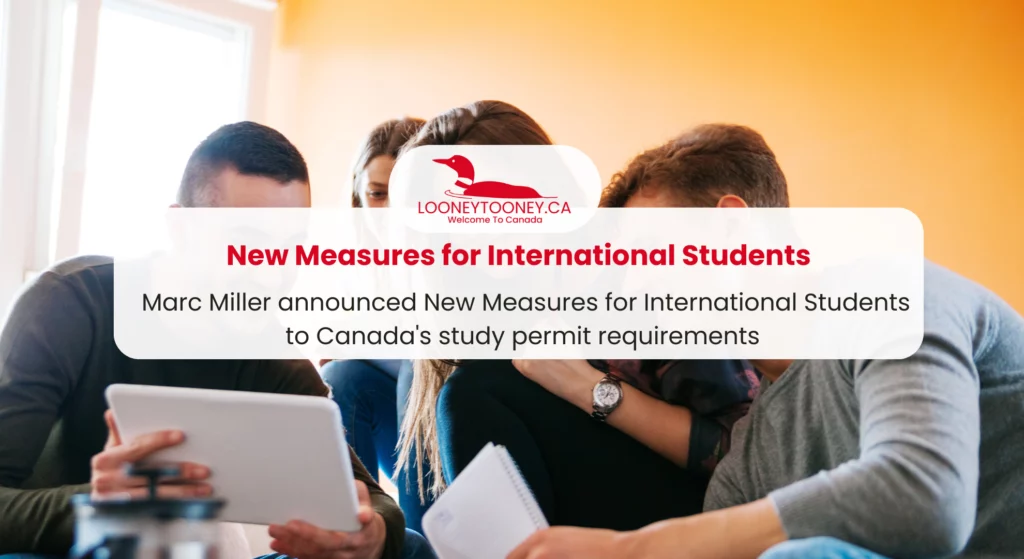If you are a Canadian Permanent Resident under the Provincial Nominee Program (PNP) and considering relocating from your current province of residency, this guide on ‘How to Move to Another Province After PNP’ is for you. Managing relocation while maintaining your PR status demands careful preparation. This guide offers insights into key steps and factors to consider when planning a move within Canada as a PNP Permanent Resident.
After successfully securing a Permanent Residency in Canada through the PNP, the prospect of relocating to a different province may align with your evolving goals. However, remember that your initial commitment was to your nominating province. While relocating doesn’t automatically revoke your PR status, it comes with responsibilities. This guide addresses the nuances of relocating as a PNP Permanent Resident and provides guidance for a smooth transition while preserving your immigration status.
Table of Contents
- What is the Provincial Nominee Program (PNP)?
- Understanding Provincial Commitments
- Relocating to Another Province: Without PNP
- Relocating With PNP: Understanding How to Move to Another Province
- Impact on Provincial Nomination and PR Status
- Can I Move to Another Province After PR Through PNP?
- Timing and Duration of Stay
- FAQs: How to Move to Another Province After PNP?
- Conclusion
What is the Provincial Nominee Program (PNP)?
The Provincial Nominee Program (PNP) in Canada is a significant pathway for skilled individuals, entrepreneurs, and workers to obtain Permanent Residency in specific provinces and territories. Through this program, provincial and territorial governments are given the authority to nominate candidates who possess the required skills, experience, and qualifications to contribute to their local economies and communities.
The PNP plays a crucial role in addressing regional labour market needs and promoting economic growth in various parts of Canada. Each province and territory has its own unique streams and criteria within the PNP, allowing them to target specific occupations and professions that are in demand locally. This approach ensures that the program is flexible and adaptable to the diverse economic and demographic needs of different regions across the country.
Understanding Provincial Commitments
When applying for a provincial nomination, applicants typically demonstrate their intent to reside in the nominating province through signed letters or commitments. Some provinces even require nominees to commit to residing within their borders as a condition for their nomination. The aim behind such commitments is to promote economic development and integration within the nominating province. However, circumstances can change post-nomination, leading to the need for careful consideration before relocating.
Relocating to Another Province: Without PNP
Once your application for PR is approved, you will get a Confirmation of Permanent Residence (CoPR) document. This document specifies the city where you plan to live when you become a Permanent Resident in Canada. If you got PR through Express Entry (like Federal Skilled Worker, Federal Skilled Trades, or Canadian Experience Class programs) and didn’t get a provincial nomination, you are not bound to a specific province. Your CoPR only says where you want to start living.
Once you are a Permanent Resident, you have almost the same rights as Canadian citizens. According to Section 6 of the Canadian Charter of Rights and Freedoms, you have “Mobility Rights.” This lets you move and find work in any province in Canada. You can change provinces even if your CoPR says a different one. Immigration, Refugees, and Citizenship Canada’s Help Centre supports this idea. Remember, Quebec has its own immigration system, but it still follows the rules in the Canadian Charter of Rights and Freedoms, including the part about Mobility Rights.
Relocating With PNP: Understanding How to Move to Another Province
When you get your PR status through a PNP, the prospect of moving away from the province that nominated you comes with intricacies. As part of the nomination process, it is common to make a commitment to settle in that province. This commitment frequently involves formal agreements or letters that express your intention to reside there. Understanding how to move to another province while preserving your PR status becomes crucial in this scenario.
After acquiring PR status, you gain protection under the Canadian Charter of Rights and Freedoms, specifically under Article 6, which addresses “Mobility Rights.” Nevertheless, there are exceptions, and Provincial Nominee Programs fall under this category. However, the exact parameters of these exceptions remain unclear.
Relocation and PR Status Risks
It’s important to be careful if you are thinking about moving from the province that nominated you after you have become a PR. The nominating province may take steps to request Immigration, Refugees and Citizenship Canada (IRCC) to revoke your PR status, citing potential misrepresentation. If the province can establish that you didn’t genuinely intend to reside there, this could result in deportation and a subsequent ban on entering Canada for five years.
Nonetheless, you have the opportunity to defend yourself in such situations. However, the likelihood of facing PR status revocation due to misrepresentation increases if you haven’t made sincere efforts to establish yourself in the nominating province. For instance, in New Brunswick, nominees often need to register within the province within 30 days of arrival. Neglecting this, even after multiple follow-ups, might prompt the province to seek PR status revocation.
Impact on Provincial Nomination and PR Status
A critical aspect to grasp is that provinces often withdraw their nominations if an individual moves out of the province before PR status is granted. This scenario arises when someone receives a provincial nomination, and then relocates before their PR application is processed. Once an individual secures PR status, they are protected by the Canadian Charter of Rights and Freedoms, which includes “Mobility Rights” under Article 6. This right seemingly guarantees free movement between provinces, but it’s important to note that Provincial Nominee Programs introduce certain limitations.
Can I Move to Another Province After PR Through PNP?
Two distinct scenarios emerge when considering a move out of the nominating province:

- Looking for Employment: If you are newly established and seeking employment related to your primary NOC code, document your job search activities, rejection letters, and efforts to exhaust provincial employment resources. Proof of residence, utility bills, and healthcare card applications further solidify your intent.
- Changing Circumstances: If you have been working in the province and intend to move, valid reasons—such as a better job offer or family considerations—should support your move. Notify the province’s immigration authorities of your intentions and reasons to maintain transparency.
Ensuring Genuine Intent To Settle
Applicants who utilize the PNP must adhere to program requirements and maintain truthfulness throughout the application process. Having a clear intention to settle in the nominated province upon arrival remains crucial.
If, upon arrival at the POE, there are indications of a shift in the intention to reside in the nominating province/territory, there is a possibility of being reported in accordance with section A44(1) for non-compliance with paragraph 87(2)(b) of the IRPR.
In more severe scenarios, if it becomes evident that an individual’s intention to reside in the nominating province or territory was never genuine, this could lead to an allegation of misrepresentation, as outlined in paragraph 40(1)(a) of the IRPA.
Timing and Duration of Stay
Deciding when to move out of the nominating province is a consideration that lacks a fixed answer. While the law doesn’t prescribe a minimum stay period, a province can attempt to revoke PR status if they perceive intent misrepresentation. To mitigate this risk, many individuals wait until they fulfill the 730-day (2-year) Permanent Residence requirement. However, a stay of 1 to 2 years post-PR status is generally seen as sufficient to prove initial intent to stay.
FAQs: How to Move to Another Province After PNP?
Below are some frequently asked questions and their answers regarding how to move to another province after PNP:
Q. Can I move out of province after PNP?
A. Yes, it is possible to move out of the province that nominated you after obtaining a PR through the PNP. However, there are important considerations and potential risks involved, including the need to maintain genuine intent to reside in the nominating province, the possibility of PR status revocation, and the impact on your provincial nomination.
Q. Can I apply to more than one province for PNP?
A. Yes, it is possible to apply for Provincial Nominee Program (PNP) nominations in two different Canadian provinces or territories simultaneously. Each province and territory in Canada manages its own PNP, and they have different eligibility criteria and selection processes.
Q. Do I need work experience to immigrate through a PNP?
A. The majority of Provincial Nominee Programs mandate a minimum of one year of work experience as an eligibility criterion for application. Nonetheless, there are certain programs tailored for post-graduate students that waive the necessity for work experience or a job offer when applying.
Q. Can I immigrate through a PNP without IELTS or CELPIP?
A. Most PNPs require candidates to take a designated French or English language exam to demonstrate their language proficiency. When planning to immigrate to a specific province, check the program’s language requirements for the required proficiency level.
Q. Is there a minimum stay requirement in the nominating province after obtaining PR through the PNP?
A. While there is no fixed minimum stay requirement in the nominating province, many individuals choose to wait until they fulfill the 730-day (2-year) Permanent Residence requirement to mitigate the risk of PR status revocation. However, a stay of 1 to 2 years post-PR status is generally considered sufficient to prove your initial intent to stay.
Conclusion
Provincial Nominee Program are becoming a popular way to enter Canada. But provinces are also finding it harder to choose and keep immigrants. If you’re thinking about coming to Canada through these programs and wondering how to move to another province after PNP, remember to balance your rights under section 6 of the Charter with the rules in the Immigration Act. Relocating from the province of nomination under PNP after obtaining PR status is possible, but it comes with legal considerations.
While there’s no uniform answer to when and how to move to another province, it’s essential to approach the situation strategically. By documenting your intent, communicating transparently with authorities, and adhering to the province’s requirements, you can confidently navigate this transition while preserving your PR status and the opportunities it affords you in Canada.
We hope that this article on “How to Move to Another Province After PNP?” has offered you valuable insights. For more information on Canada Immigration, make sure to keep a close eye on LooneyTooney.ca. By staying connected, you will access valuable insights and stay updated with the latest developments.
You may also be interested in:





